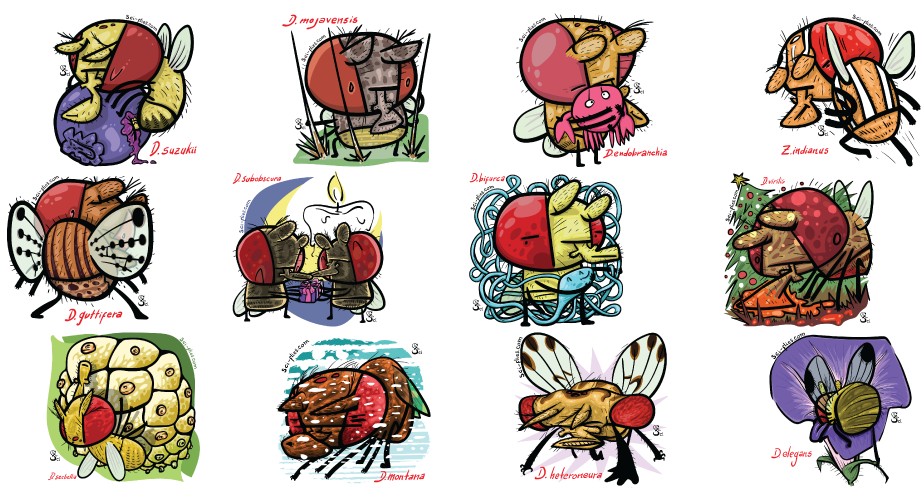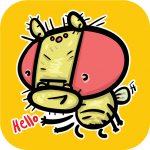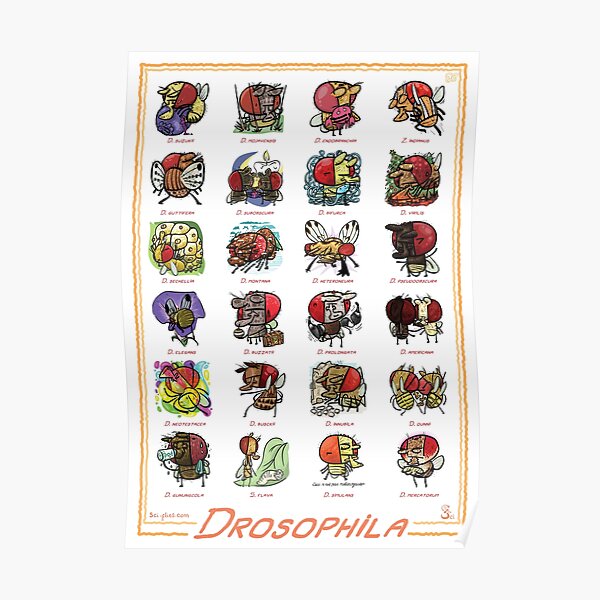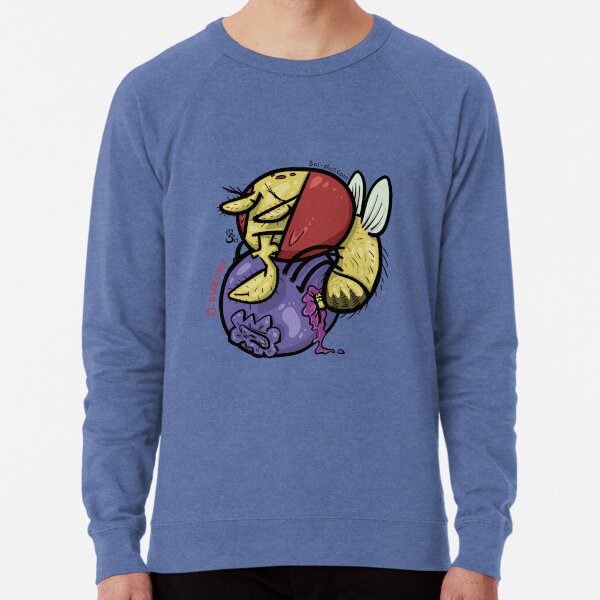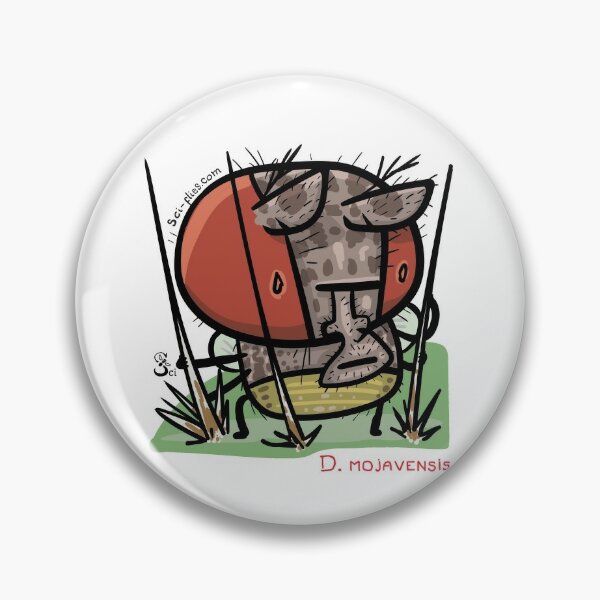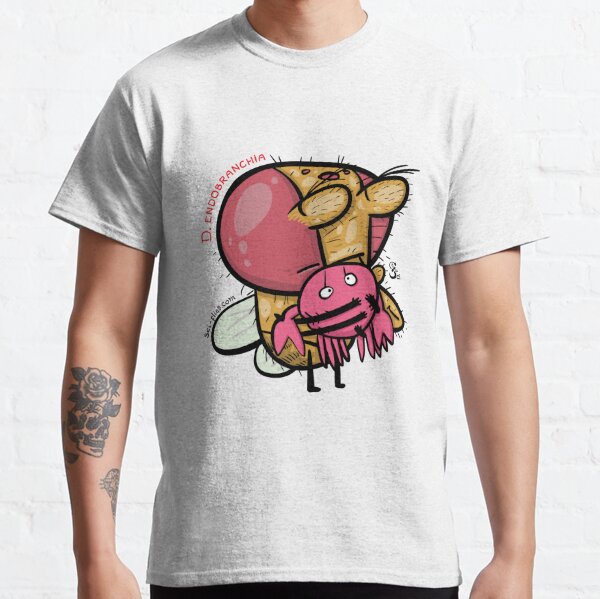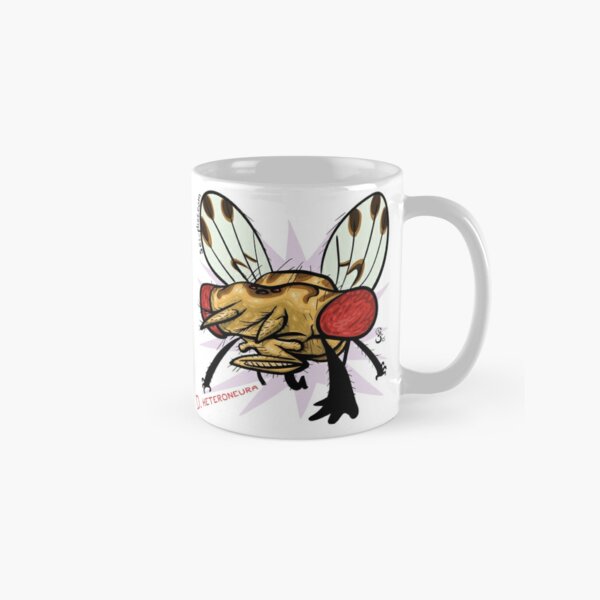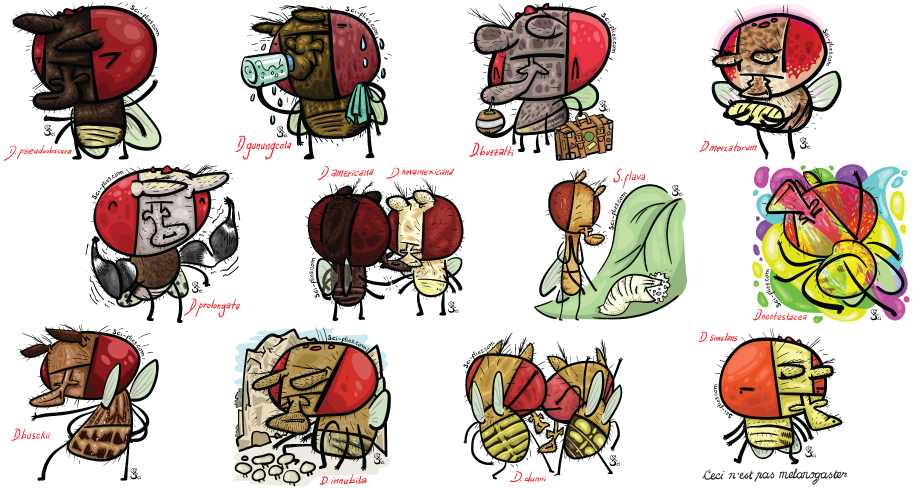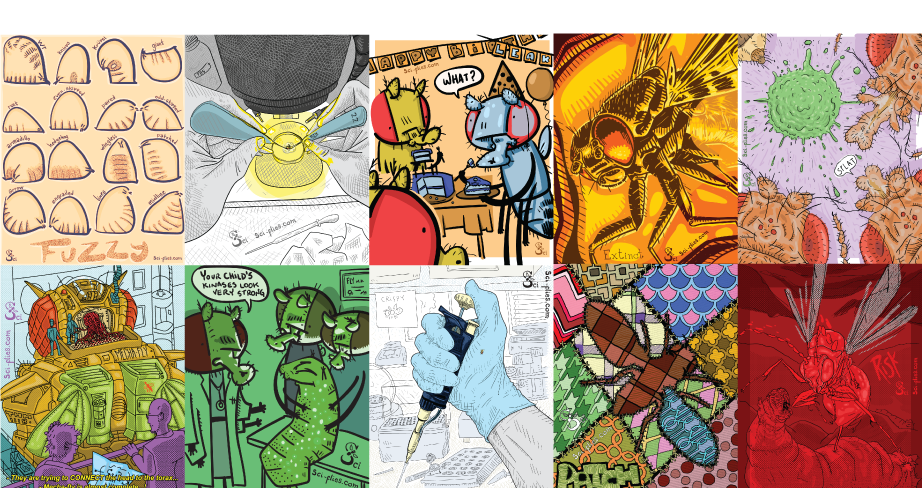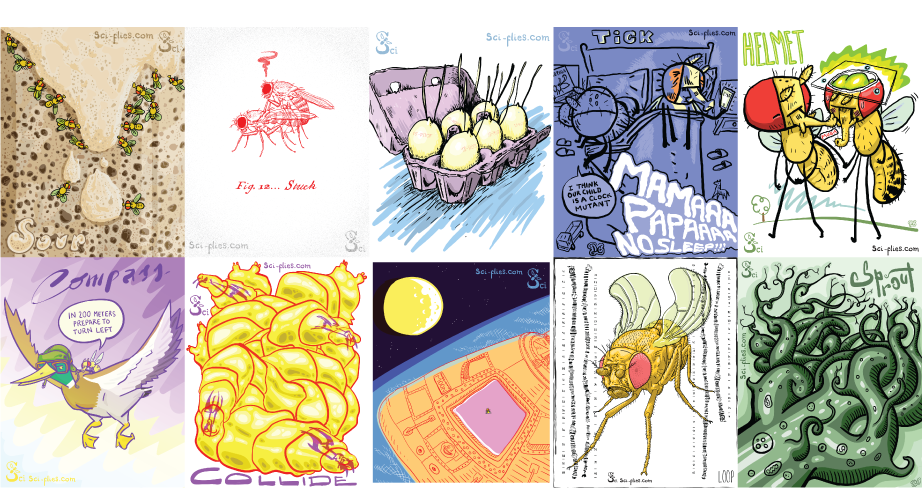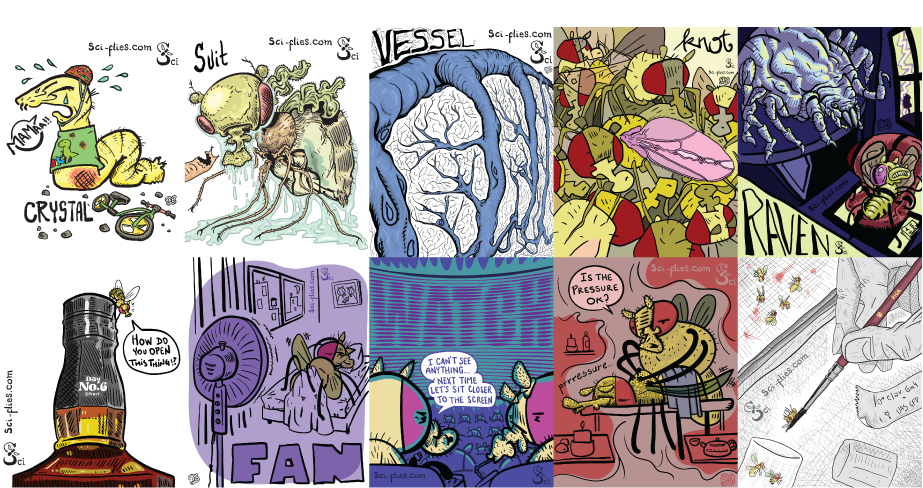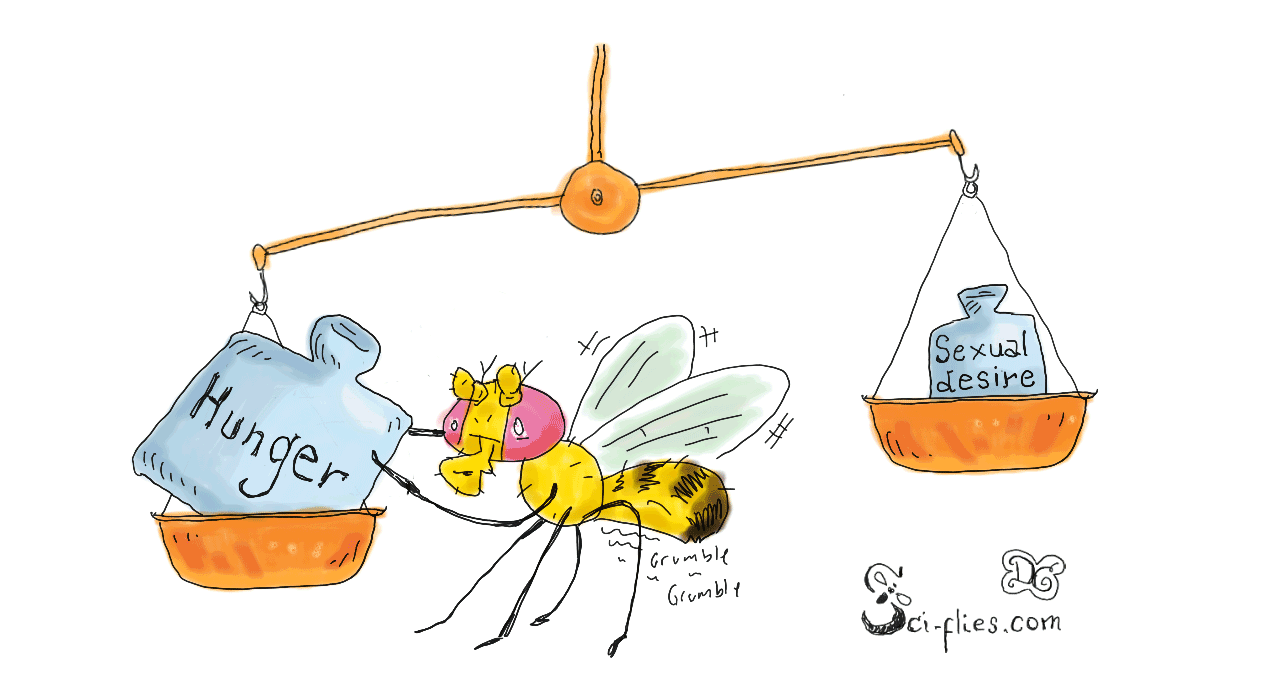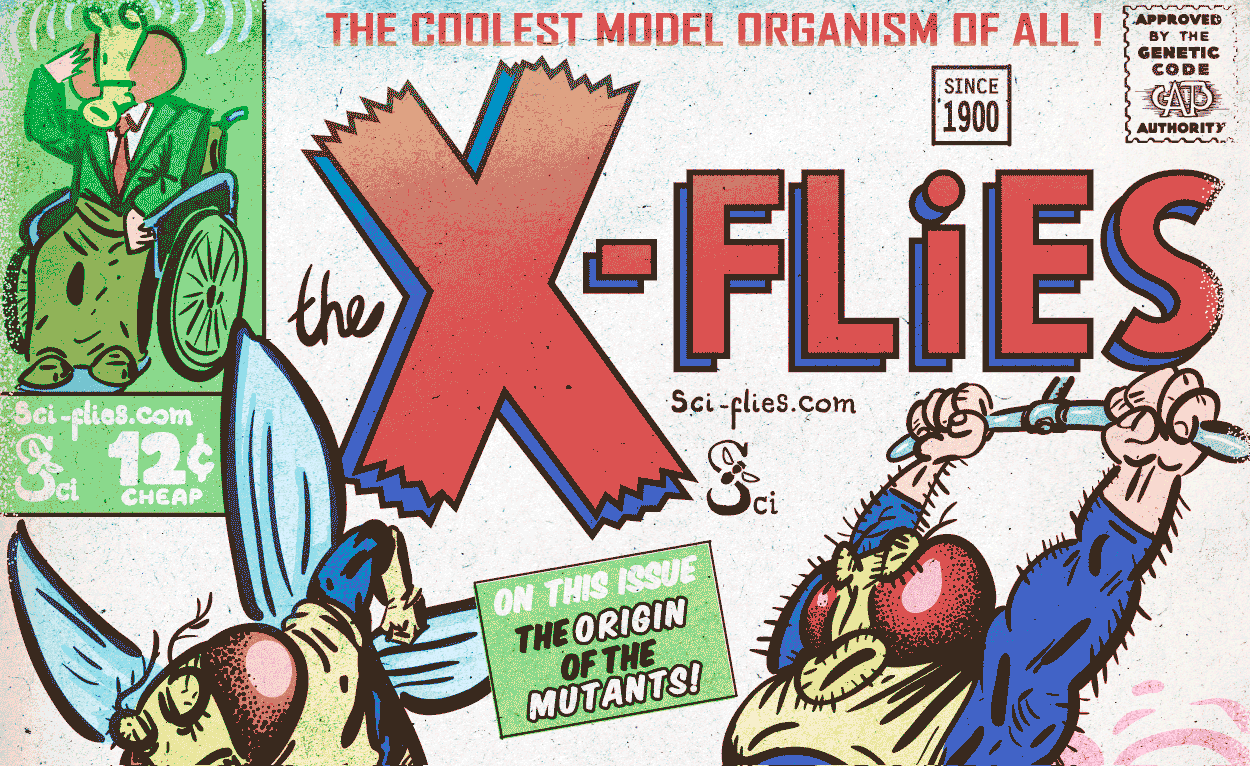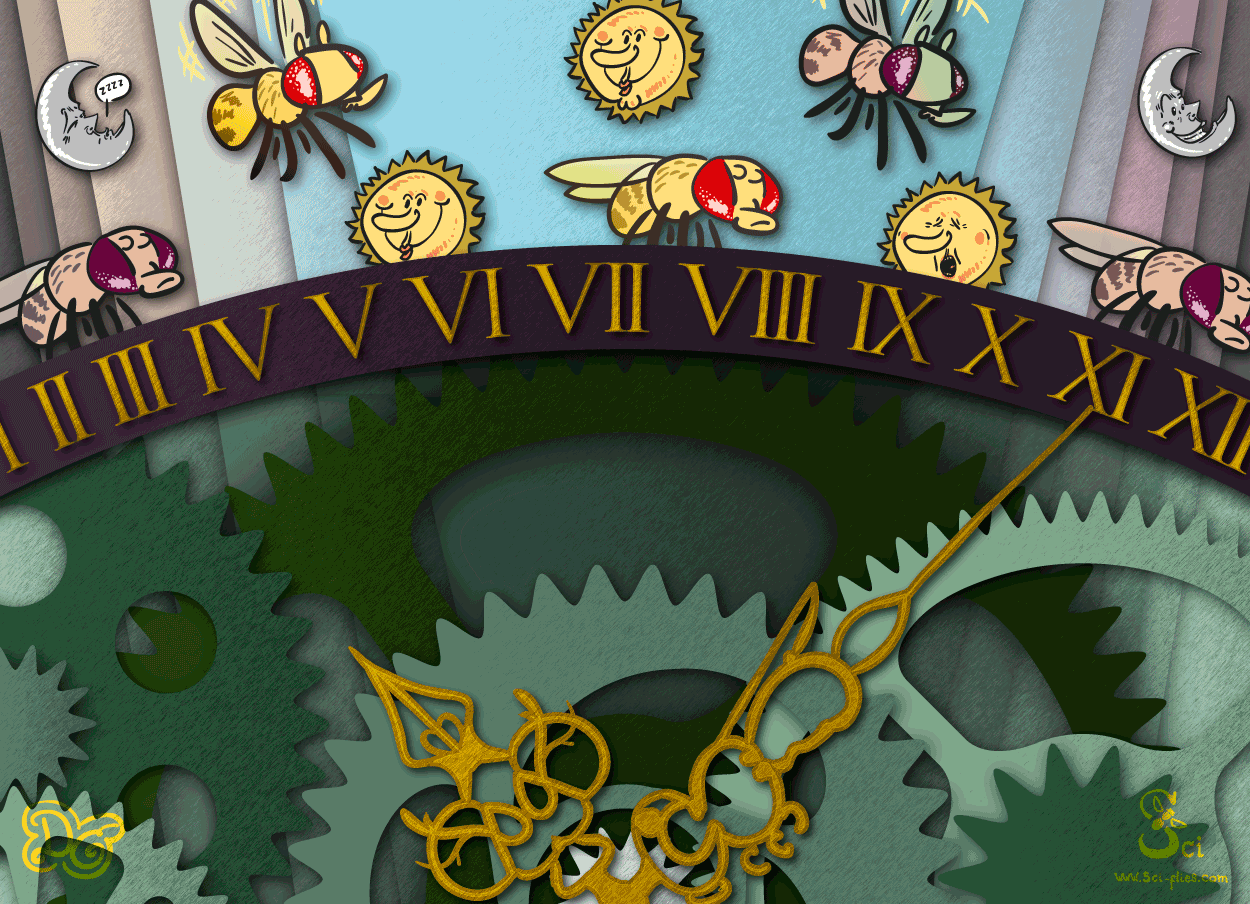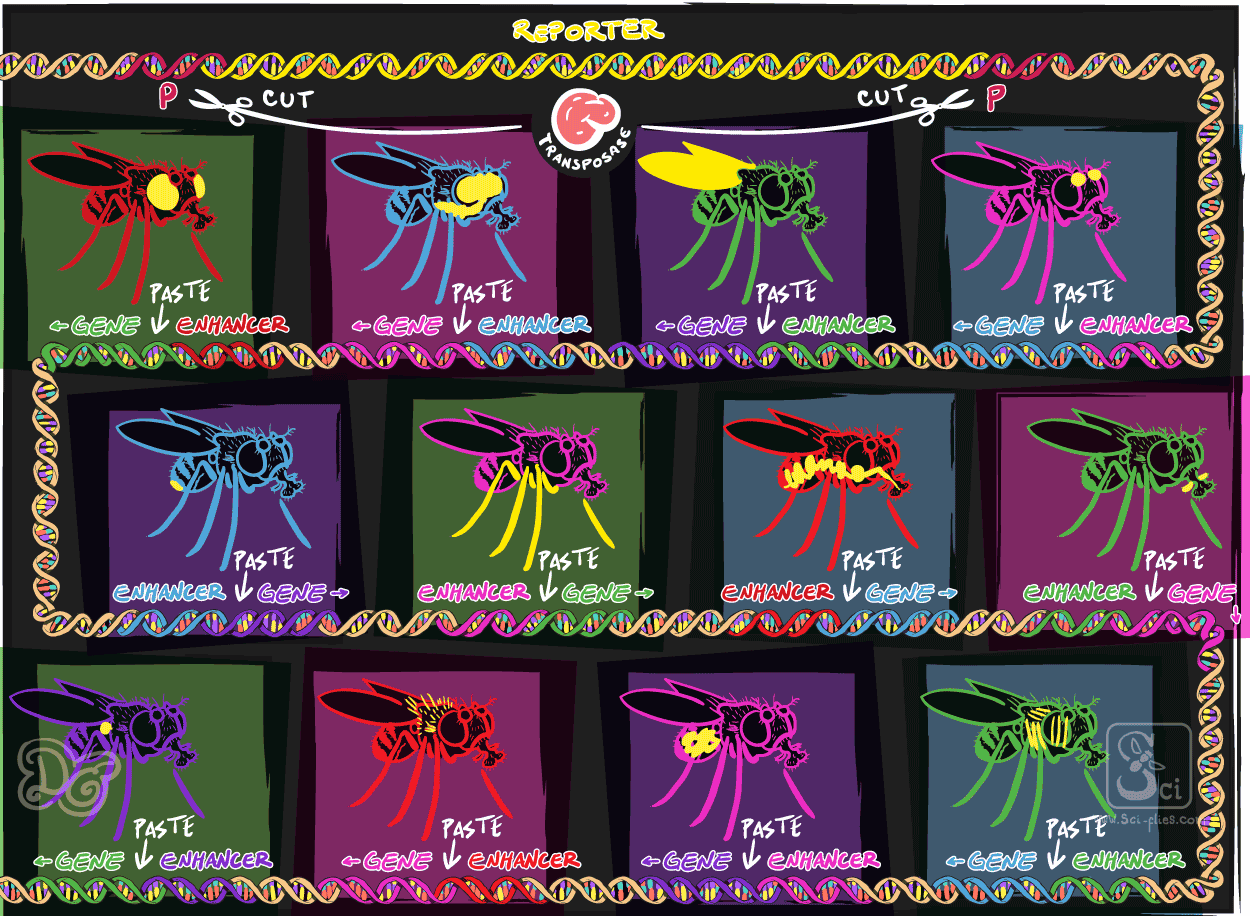a tour across drosophila diversity
Advent calendar 2021 - Part I
December can be a gloomy month up in the Northern Hemisphere. There is not much sunlight, it is very cold, and, if you add to that another wave of Covid19, I have to admit… December is not my favorite month. Perhaps that is why I embrace the Advent Calendar tradition with such joy, especially this year.
For those not familiar with this tradition, the Advent Calendar is a special calendar to count the days of Advent in anticipation of Christmas. Every day you open a new door in the Calendar and behind it a special surprise awaits you. The treat can be a toy if you are a kid, a pleasant image, or, very popular these days, a piece of chocolate.
We decided to also do an Advent Calendar for the Drosophila lovers. During December, we feature each day a different species of Drosophila.
Why? Well, because these animals are simply fascinating!
There are more than 1500 species of Drosophila, which live in the most diverse environments, some reproduce and feed on fruits, and others on flowers, mushrooms, cacti, and even on top of a crab! Drosophila flies can be quite bland or have beautiful spots on their wings. Some are very small and some are rather big. They have different head or leg shapes, and the diversity of behaviors is astonishing!
All this biodiversity didn’t appear overnight, but it is the product of more than 50 million years of evolution. To put things in perspective, there is almost the same evolutionary distance between D. melanogaster and D. willistoni as there is between humans and rodents, such as mice and rats.
Studying how the different species of flies within the Drosophila genus diverse and evolve, teaches us a lot about the mechanism of evolution in general. There is no other group of animals with such complexity and diversity, with such in-depth understanding of the phylogeny, and with such vast knowledge of genetics, development, neurobiology, and behavior, physiology, and ecology of the individual species.
In my humble opinion, this is what makes studying Drosophila species, including Drosophila melanogaster, so fascinating and important.
I hope that with our Advent Calendar we can convey to you at least a bit of all this fascination and love for these wonderful species.
And without further ado, let’s kick off the Calendar.
DAY 1. Drosophila suzukii
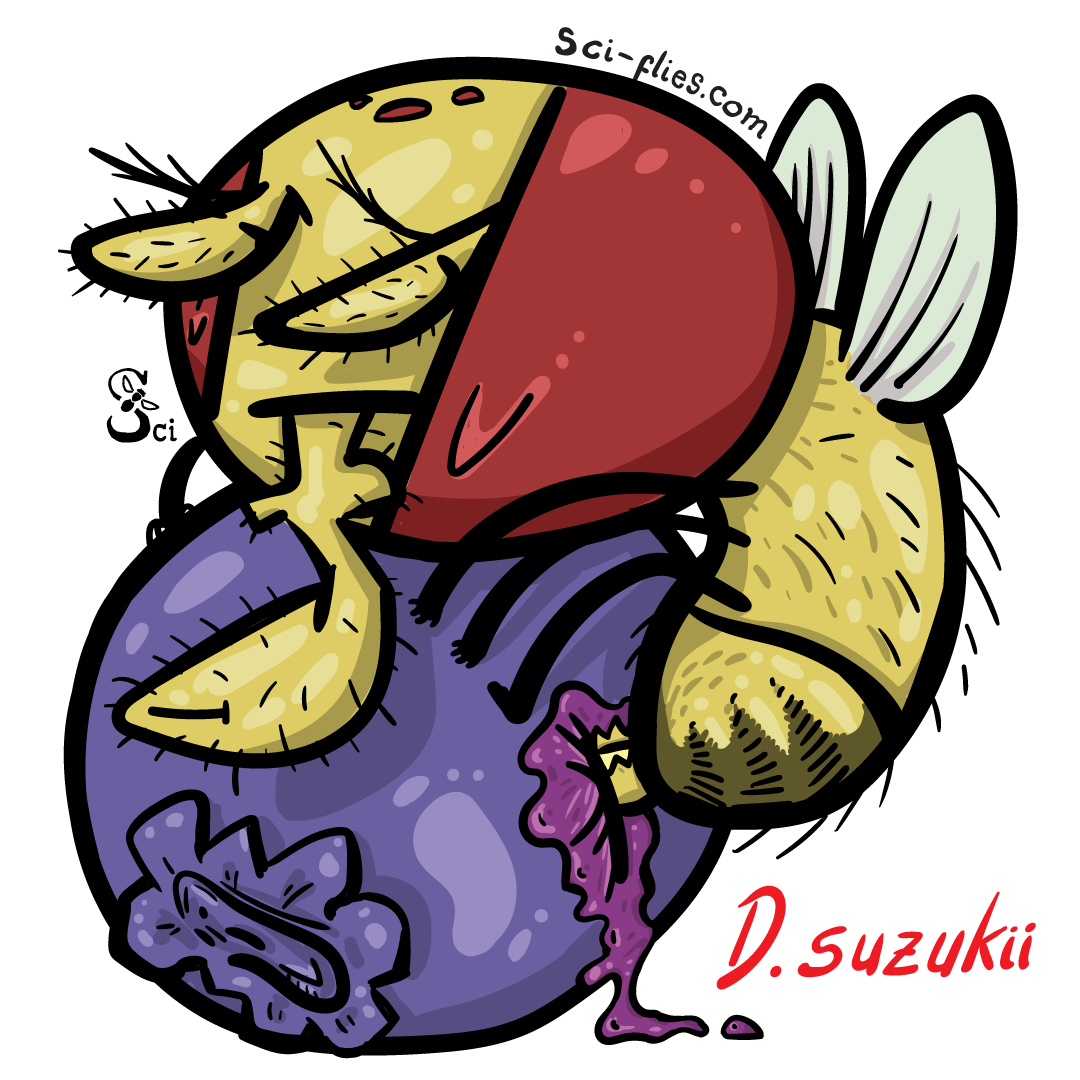
We decided to do an Advent Calendar featuring different species of Drosophila. On this first Day meet Drosophila suzukii, a dreaded pest species! Originally from southeast Asia, it has now spread to Europe and America. Unlike D. melanogaster, D. suzukii flies like to lay their eggs in fresh fruit, still attached to the plant, damaging the fruit and causing enormous crop loss. Females have a serrated ovipositor that allows them to perforate the hard skin of fresh fruit. During evolution, they also acquired some changes in their sense of smell, taste, and mechanoreceptor, all of them help the female to find and prefer this new environment (the fresh fruit). D. suzukii is also known as the spotted-wing fly, due to the spots in the male fly.
You can learn more here:
We had the idea of making an Advent Calendar at the very last minute (we even started a day later), so we had to kick off with an “easy” species. Diego and I work with D.suzukii, so we already knew these flies quite well, so we didn’t have to spend a lot of time looking for information on the literature. Diego even added the male fly.
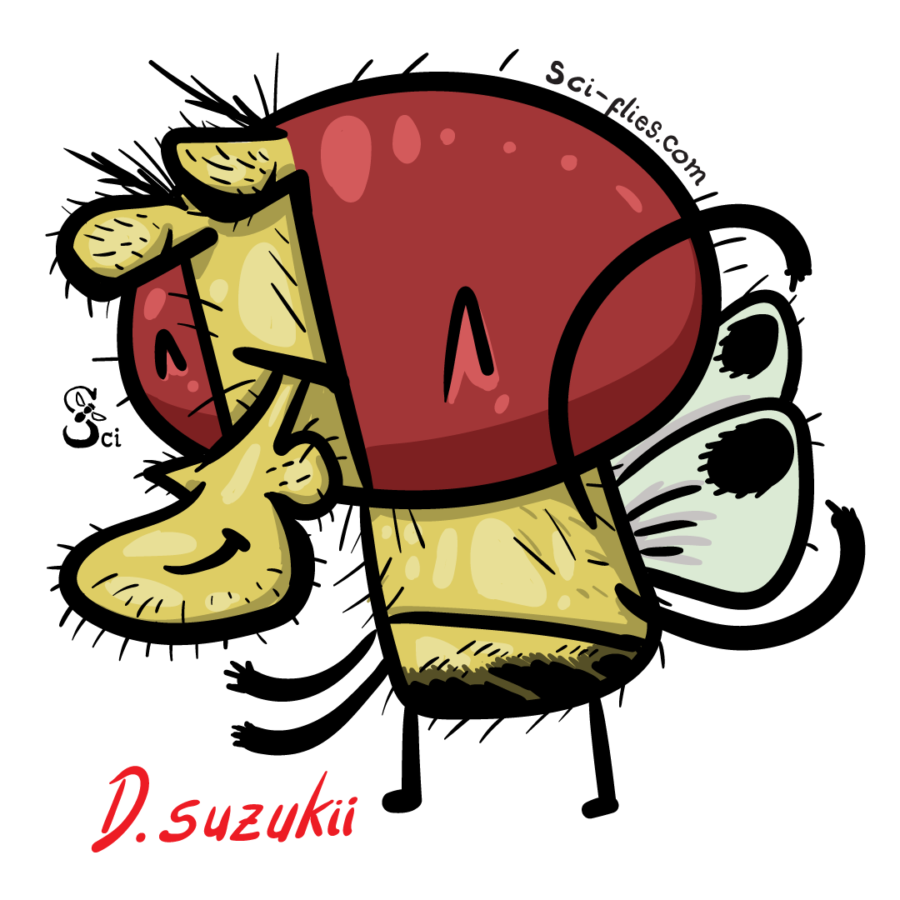
DAY 2. DROSOPHILA mojavensis
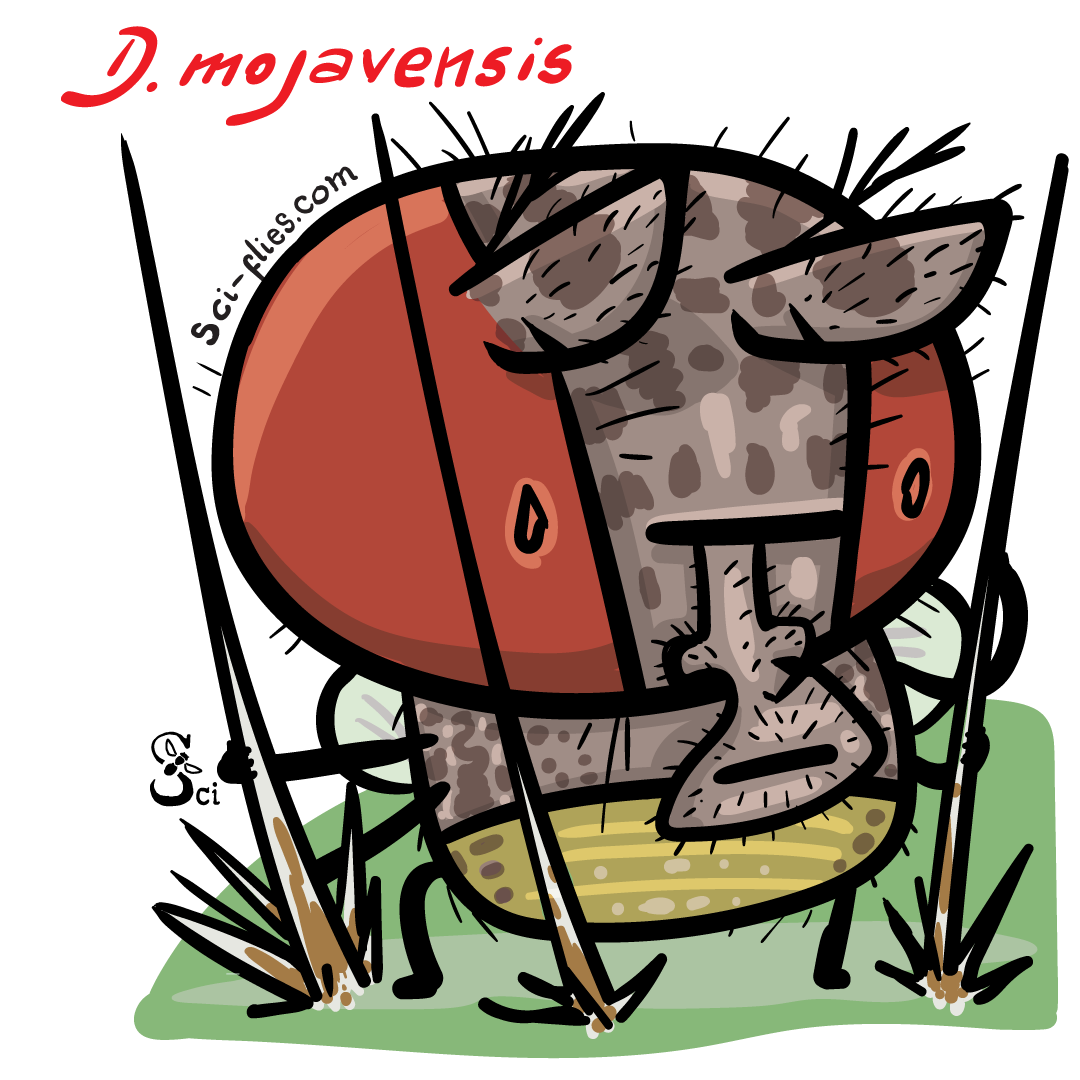
On this 2nd Day meet Drosophila mojavensis, the fly in love with a cactus! D. mojavensis is actually not one but four subspecies, which live in different geographic regions and feed in different cactus species. This makes D. mojavensis group a good model for speciation studies. The different subspecies behave and smell differently, and they have different genitalia.
But that is not all… In addition to living in different areas and eating different cactus, the different subspecies are sexually isolated, using different modes of sexual communication to find their love partner.
You can learn more here:
We also work with these flies, and Diego has some experience looking at them and drawing them. So it was an easy choice to start warming up. The idea came instantly and was an easy drawing.
DAY 3. drosophila endobranchia
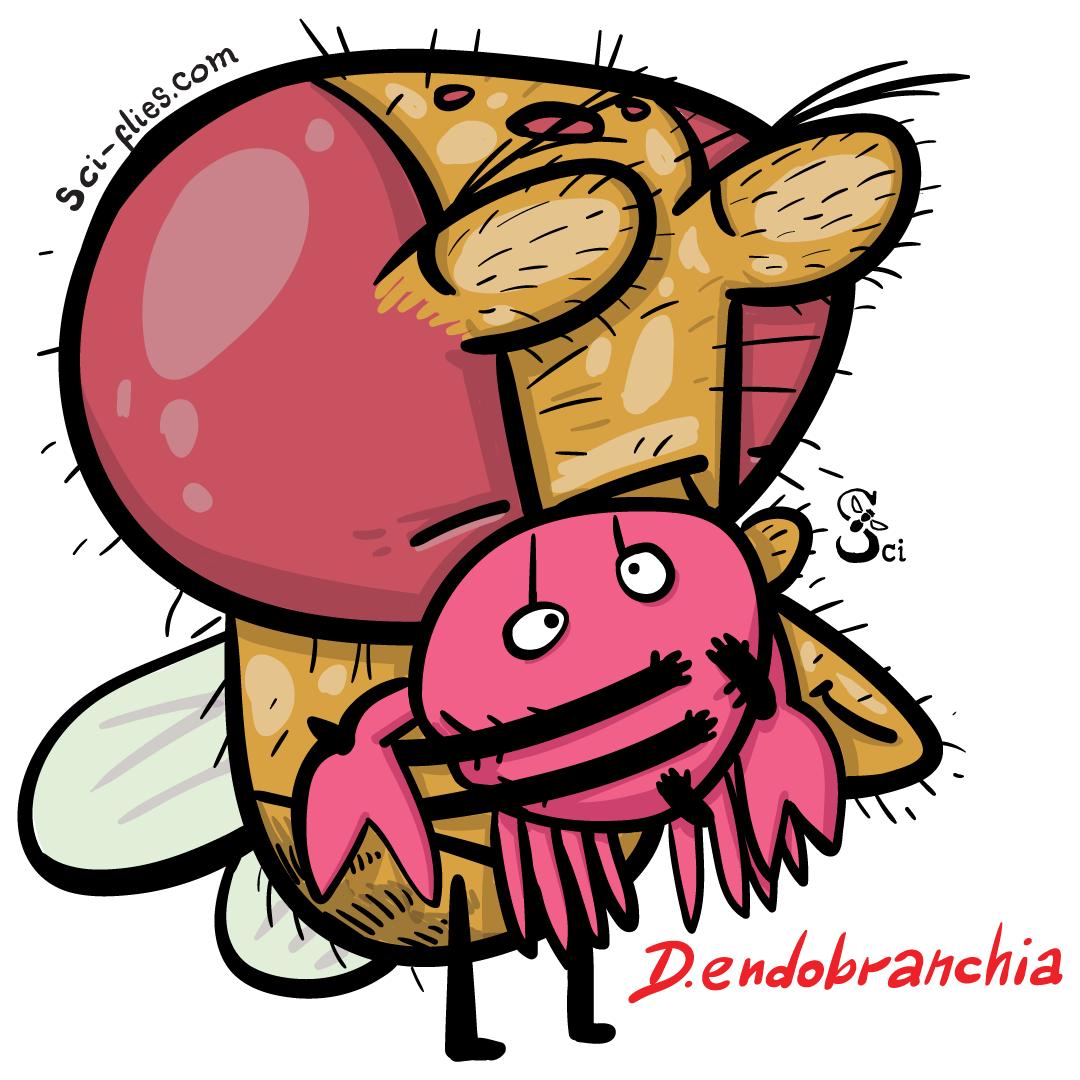
On this 3rd Day of our Advent Calendar meet Drosophila endobranchia, the fly living within a crab!
Drosophila endobranchia, endemic to the #caymanislandsCayman Islands and Guantanamo Bay, is one of the few species that have adapted to live on the crab “shell” and mouthparts.
They feed on the microbes living in the crab.
Females lay their eggs around the crab eyes, and the larvae crawl later to the gills where they stay for up to four months. Later, the big larvae will go to the mouthparts where they will prepare for pupariation.
You can learn more here:
For the Advent Calendar, we asked researchers working with Drosophila flies for suggestions on Twitter. People were enthusiastic about the project and were very cooperative. In less than 2 hours I had a very long list of interesting species, links to research papers and even pictures of the flies and personal anecdotes. We really enjoyed the interaction with the community!
The idea of featuring D. endobranchia hugging a stuffed crab actually came from one of these enthusiastic researchers.
Day 4. Zaprionus indianus
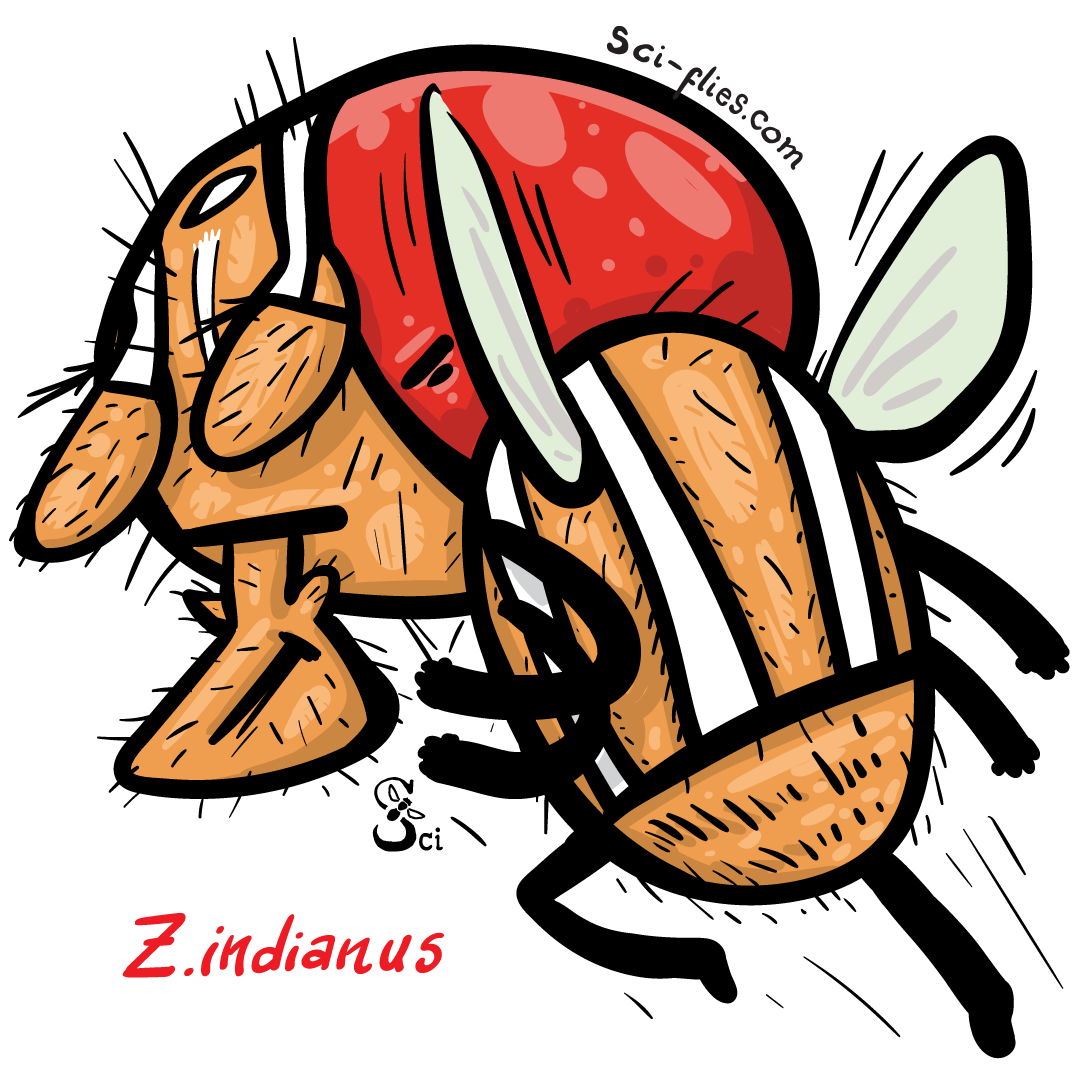
On this 4th Day of our Advent Calendar meet Zaprionus indianus, a stylish fruit fly!
As you might have suspected, Z. indianus is actually not from the genus Drosophila, but still quite closely related to our Drosofriends. It belongs to the genus Zaprionus, Family Drosophilidae.
You can easily recognize the flies by the white longitudinal stripes (both in males and females).
These flies are originally from Africa but, as our friend D. suzukii, Z. indianus has decided to explore the world in recent decades. You can now find it in the Middle East, India, and South and North America.
Although it normally prefers overripe, fallen, or rotting fruits, in Brazil Z. indianus does attack fresh figs.
Could Z. indianus also become a global pest species?
You can learn more here:
This fly is so distinctive with the white and black stripes. Diego wanted to do a dynamic drawing, as if the fly was a racer of some sort. Fun fact, the black stripes are made up of pigment, but the white, are an effect on the reflection of light achieved by the shape and placement of little hairs on the cuticle.
Day 5. Drosophila guttifera
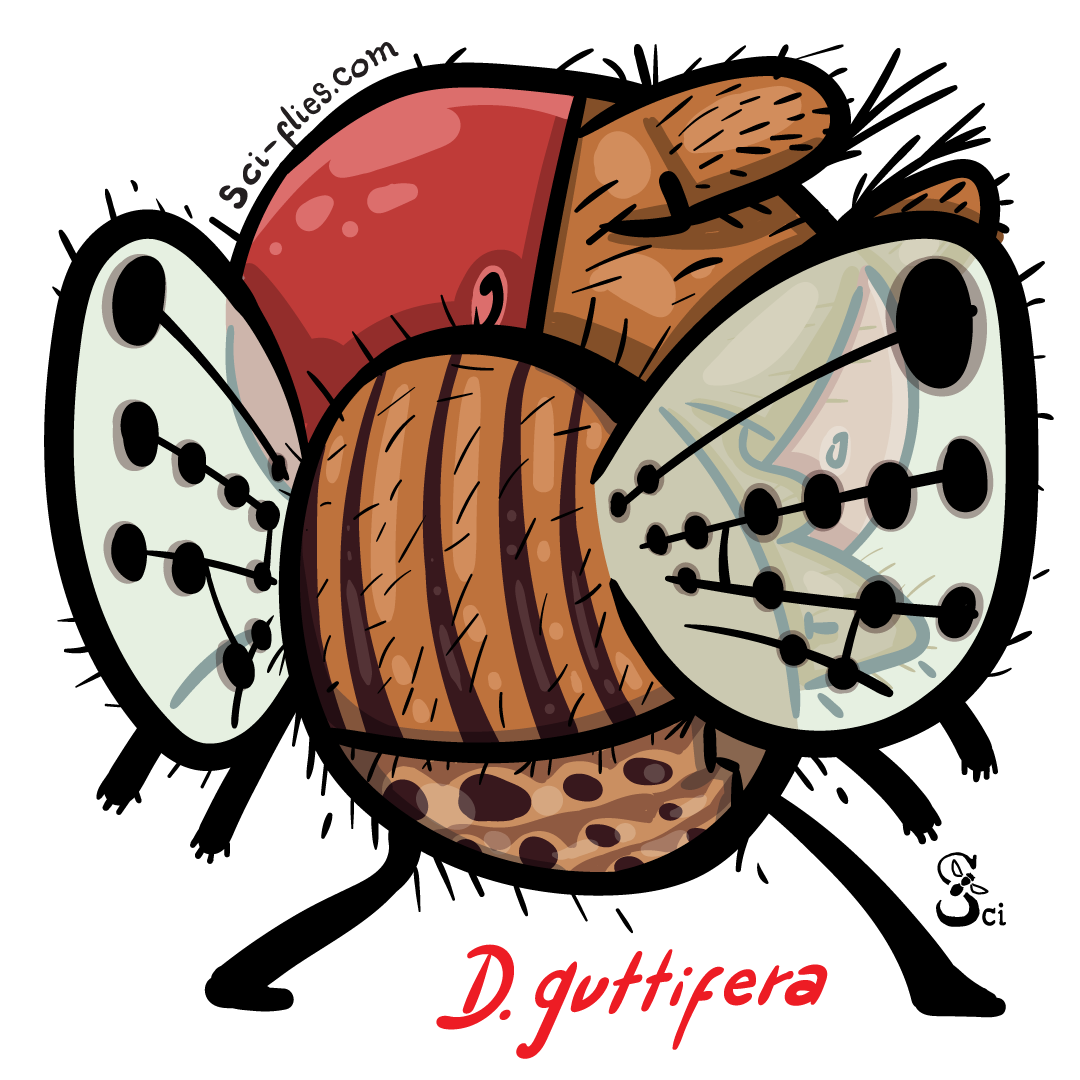
On this 5th Day of our Advent Calendar meet Drosophila guttifera!
Drosophila guttifera can be recognized by their beautiful pigmentation in the wings, and it serves as a model to study color pattern formation.
Closely related species of the quinaria group (flies feeding on mushrooms), also have distinctive patterns of wing pigmentation.
How has this curious color patterning evolved?
One important gene for pigmentation is Wingless. Instead of modifying the gene Wingless, changes during evolution in the genomic sequences regulating the expression of Wingless (AKA, enhancers) resulted in the characteristic color dots in the wing of D. guttifera.
Interestingly, some of these new enhancers regulate the expression of the gene Wingless even from 70 kb apart (that is very far away!)
You can learn more here:
With this species I began to dig into the importance of pigmentation patterns. I knew very little about the subject and ended up learning quite a bit by researching the different species. Someday I should dedicate a post to it.
DAY 6. drosophila subobscura
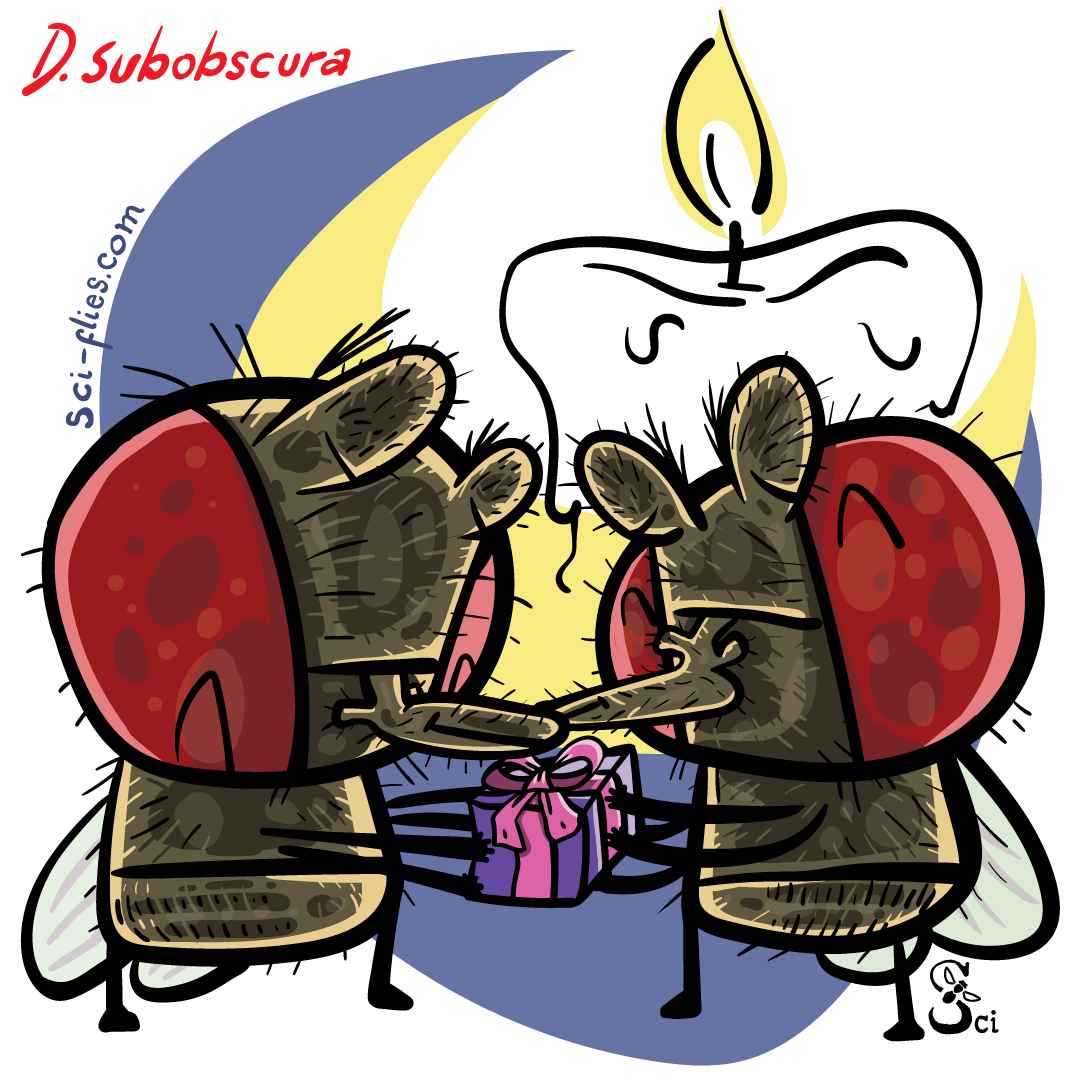
On this 6th Day of our Advent Calendar meet Drosophila subobscura!
Their females only mate with one male at a time, and only if there is light. Unlike most Drosophila flies, D. subobscura males do not sing a “love song”.
Males tap the female, move their wings as scissors, extend their proboscis, do a mid-leg swing, offer a nuptial gift (a regurgitated drop secreted from the male’s crop), dance, extend their wing, and finally, attempt to copulate the female.
The nuptial gift seems to be nutritive. If the female is starved, she will accept the male’s gift more frequently, and she will be able to lay more eggs.
You can read more here:
Hannukah is one of those holidays that is very important for the Jewish community in the United States but not so much for the community in Argentina. In fact, we just started to pay a little attention to it when we met a Jewish friend from the US. We still don’t light the candles but we like to seize the occasion and enjoy some fried delicacies. 🙂
To commemorate the lighting of the candles, I again reached out to the Drosophila community on Twitter. I was looking for a species that would mate exclusively under the light and ended up finding one that also exchanges gifts (another important activity on the last night of Hanukkah)!
day 7. drosophila bifurca
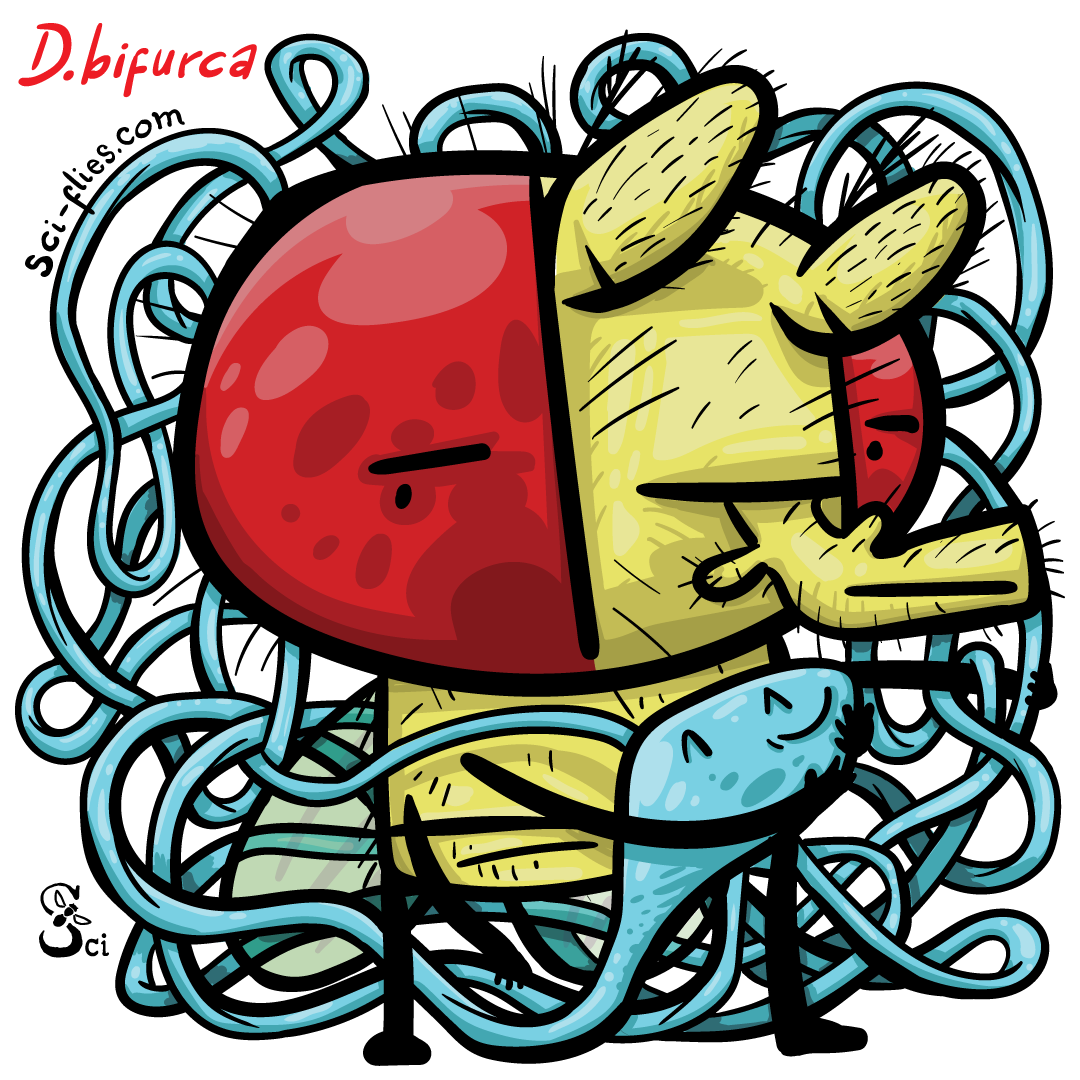
On this 7th Day of our Advent Calendar meet Drosophila bifurca!
Drosophila bifurca have the longest sperm cells of any organism on Earth (almost 6 cm long packed in a 0.3 cm fly!)
Now, size doesn’t matter… or does it?
Producing giant sperm cells is very costly, and males only produce a few of them.
From the male perspective, it sounds more efficient to produce tons of sperm cells, so, why does D. bifurca have such huge and limited sperm cells?
Being able to produce such energetically costly cells could be an indication of good health, and probably good genes.
Read more here:
When Diego read about this species and the size of their spermatozoa, he immediately thought of how precious each of those cells must be, and pictured a special relationship each male might develop with them, as if they were a sort of pet. It was fun to draw.
day 8. drosophila virilis
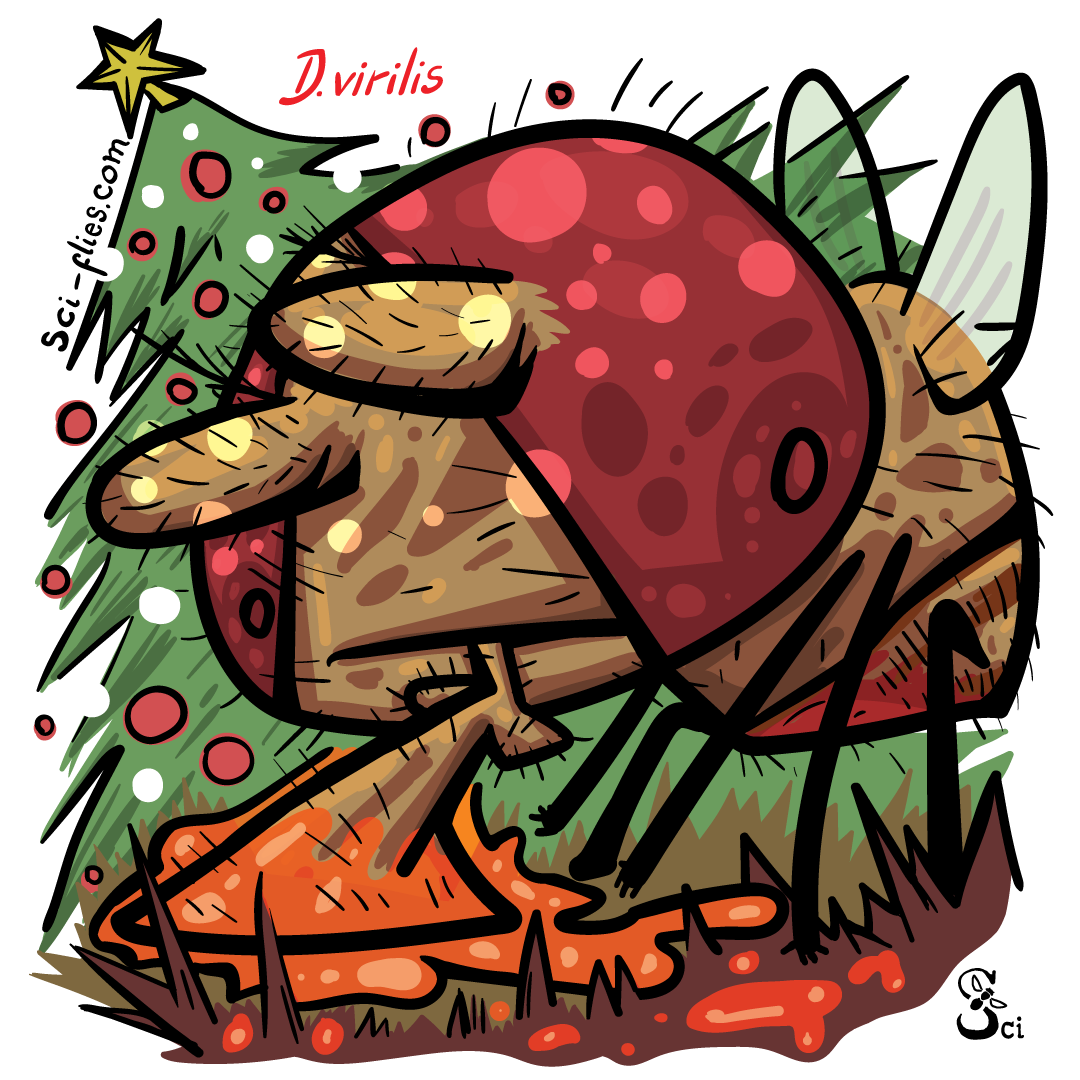
On this 8th Day of our Advent Calendar meet Drosophila virilis, a sap tree feeder!
In Argentina, we generally decorate the Christmas tree on December the 8th (Día de la Virgen). So what better Drosophila species than one feeding on fermenting tree sap?
Drosophila virilis probably originated in the forests of China but has today a worldwide distribution.
Drosophila virilis took the courtship song to a next level. Not only do males and females vibrate their wings during courtship, generating two songs, but they do it coordinately and duet.
Females integrate both auditory and tactile cues from the male to produce and coordinate their songs.
Read more here:
The reference to the Christmas tree on December 8th (in homage to the day that we decorate the tree in Argentina) came to both of us independently. Mind-connected, us? No way!
day 9. drosophila sechellia
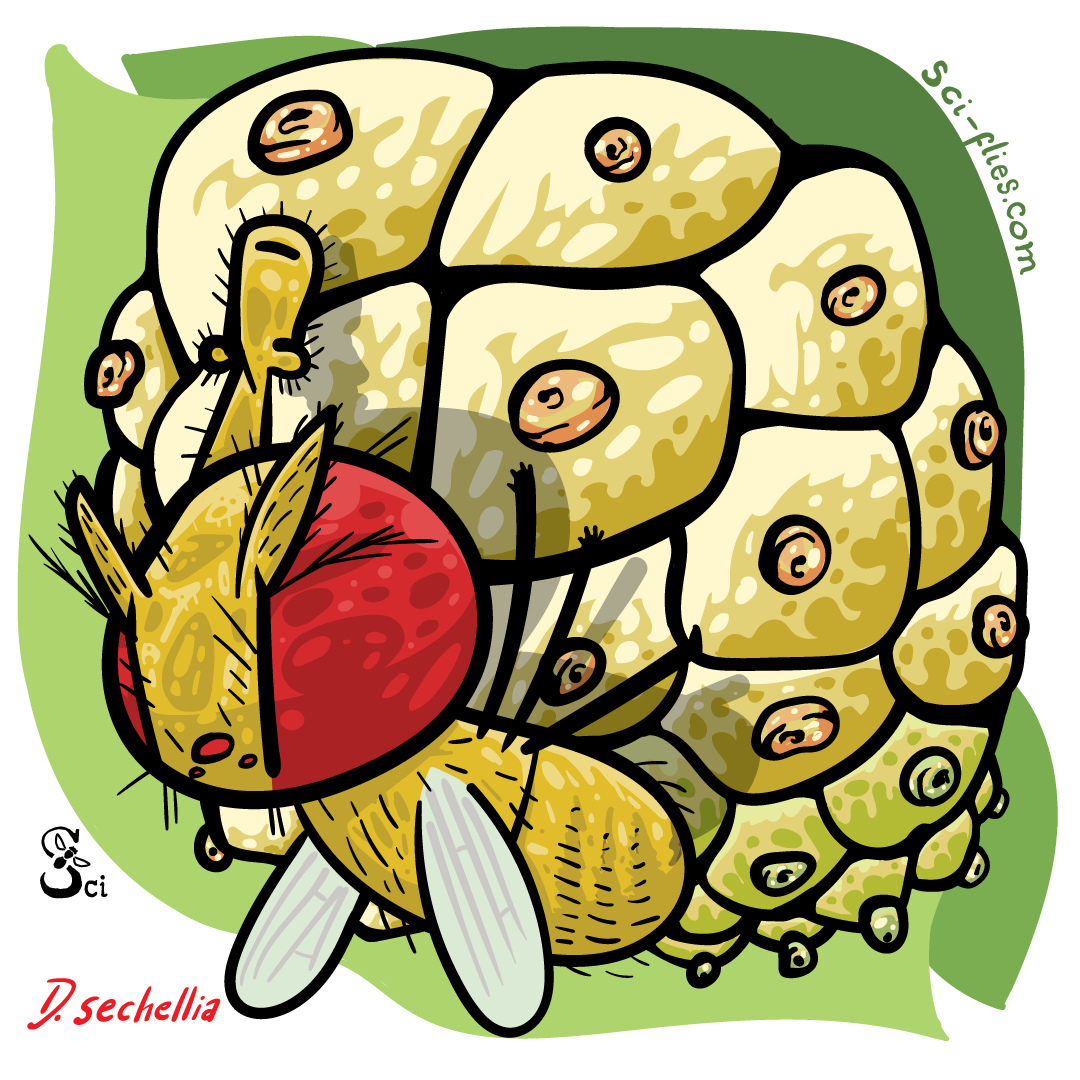
On this 9th Day of our Advent Calendar meet Drosophila sechellia, the fly from the paradisiac island!
Drosophila sechellia is endemic to the Seychelles islands and specialized to lay eggs and feed on the Noni fruit. Noni trees are very abundant in those islands. Many Drosophila, including its sister species D. simulans, find Noni toxic.
The toxicity comes from a high content of acids, to which D. sechellia appears to be resistant. Moreover, D. sechellia depends on a chemical present in the fruit (L-DOPA) to complete the maturation of her eggs.
D. sechellia has adapted to smell and taste better this fruit.
Read more here:
Another easy species. I am working with D. sechellia so I know the literature quite well.
day 10. drosophila montana
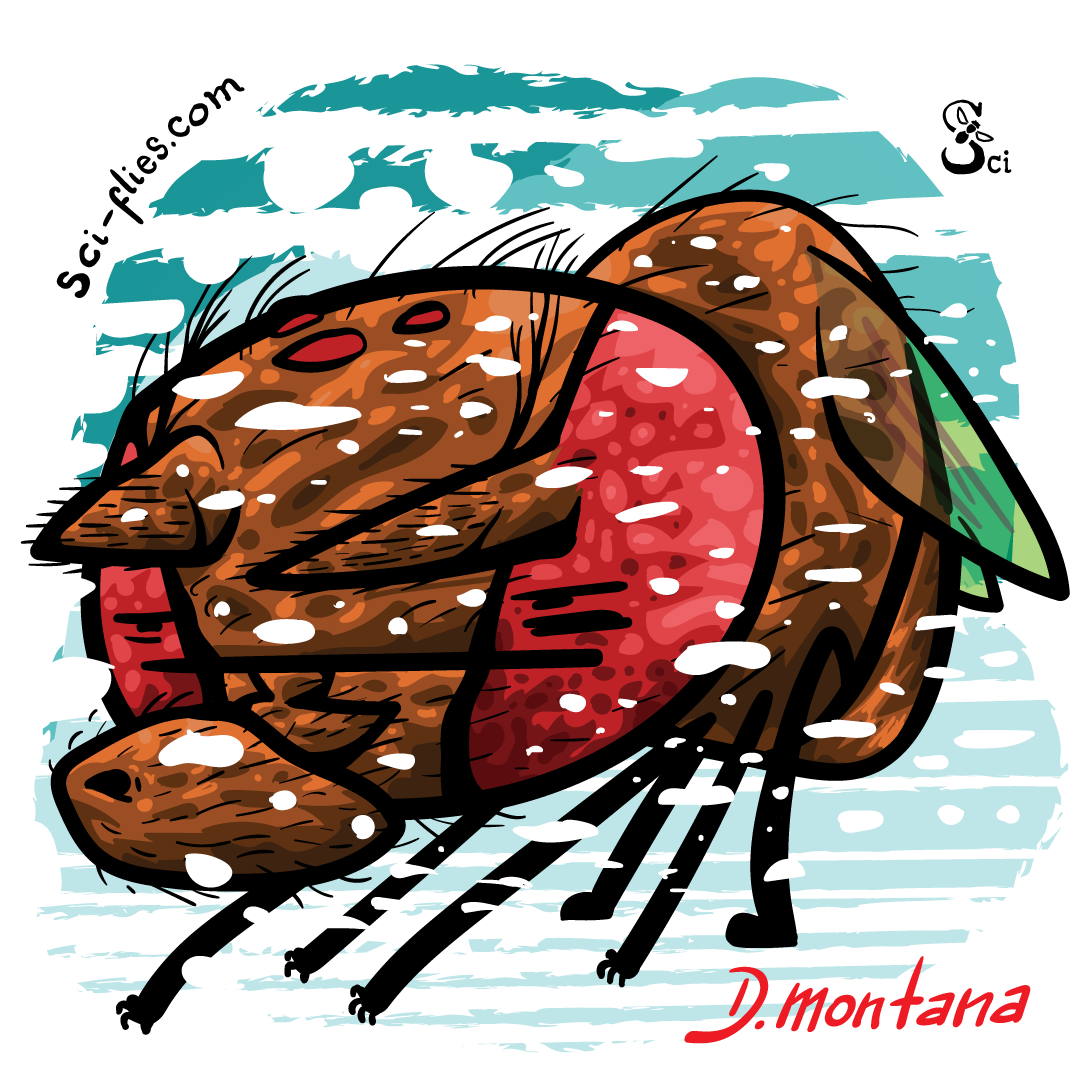
On this 10th Day of our Advent Calendar meet Drosophila montana, a super cold-resistance fly!
D. montana lives in very cold places. We can find them in the North hemisphere at high latitudes (Finland and Canada) and high altitudes (on the Rocky Mountains).
These flies acclimate and survive low temperatures, and during winter females enter reproductive diapause, meaning that they arrest the development of their egg cells.
Many genes implicated in neuron development, metabolism, and reproduction, change their expression when days become shorter as winter approaches. Those changes could help flies better cope with the cold conditions.
Check out this video to see how to study cold resistance.
Read more here:
In the pictures Diego saw, this fly looked darker than D. melanogaster and their resistance to cold made him think of bears in the snow. That resulted in this drawing.
day 11. Drosophila heteroneura
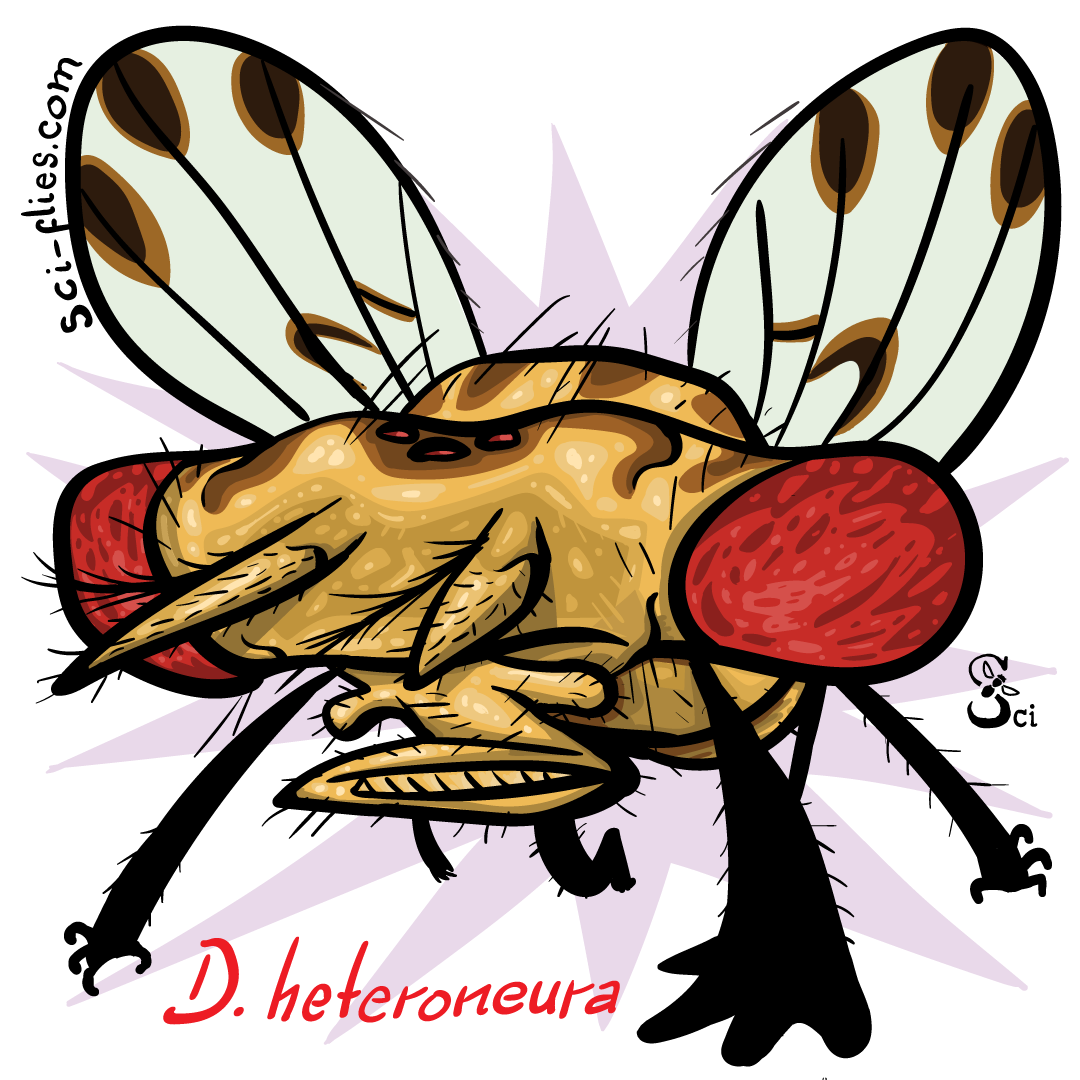
On this 11th Day of our Advent Calendar meet Drosophila heteroneura, a Hawaiian fly!
D. heteroneura is one of the Hawaiian Drosophila species, a group of around 1000 species native to the Hawaiian Islands. This group is very diverse but a great part of this diversity comes actually from a single ancestral Hawaiian species. This makes it an excellent group for evolutionary studies.
You can recognize D. heteroneura for its broad, hammer-shaped head of the male. Males have long pushing contests, where flies face each other and push until one forces his opponent backward.
In nature, D. heteroneura can occasionally cross with another closely related species, D. silvestris. However, most of the time, they don’t court nor fight with each other. Behavioral reproductive isolation could play an important role in the speciation of these 2 species.
Read more here:
Choosing only one Hawaiian species is a difficult task. There are so many interesting species with beautiful wings, and funny shapes!
day 12. Drosophila elegans
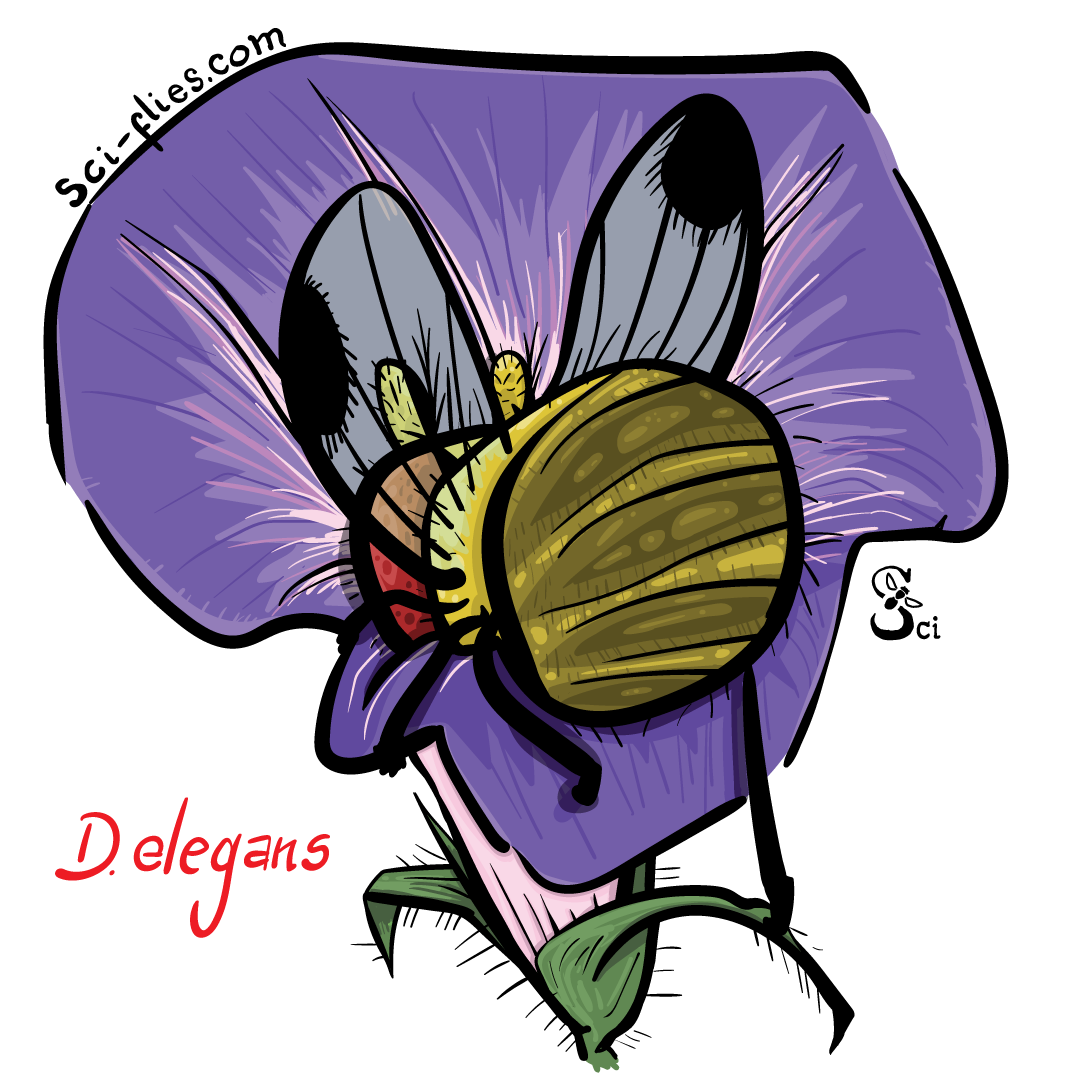
On this 12th Day of our Advent Calendar meet Drosophila elegans, a flower-feeding fly!
D. elegans feeds mainly on morning glory (Ipomoea) flowers.
Two forms of D. elegans are geographically and partially sexually isolated: a black morph distributed in the Ryukyu Islands and Taiwan, and a brown morph living in southern China, the Philippines, and Indonesia.
Males from D. elegans are very territorial, choosing one flower to mate, and defending it from other males. Bigger males can better defend their territory.
Another interesting flower-feeding fly is D. suma. These flies will use their legs, equipped with strong spines, to scratch the petals, and then ingest the liquid that pours from the petals.
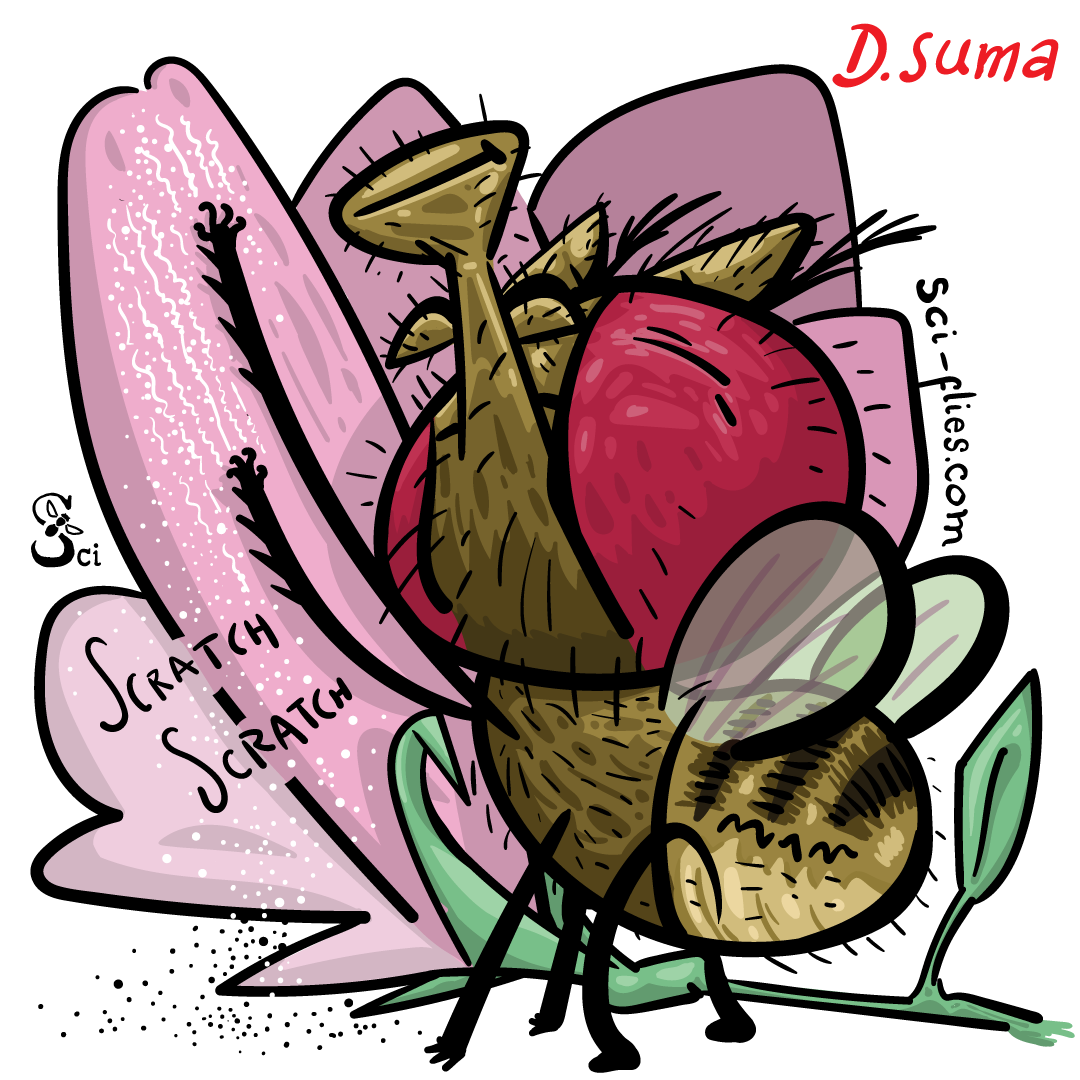
Diego discovered D. suma and D. elegans when researching for extinct species for the Inktober2021 prompt. There was an extinct species called D. elegans which was later renamed Drosophila statzi. This led him later to read about flower feeding species and read about D. suma.
This is the end of Part I. I hope you enjoyed it so far.
